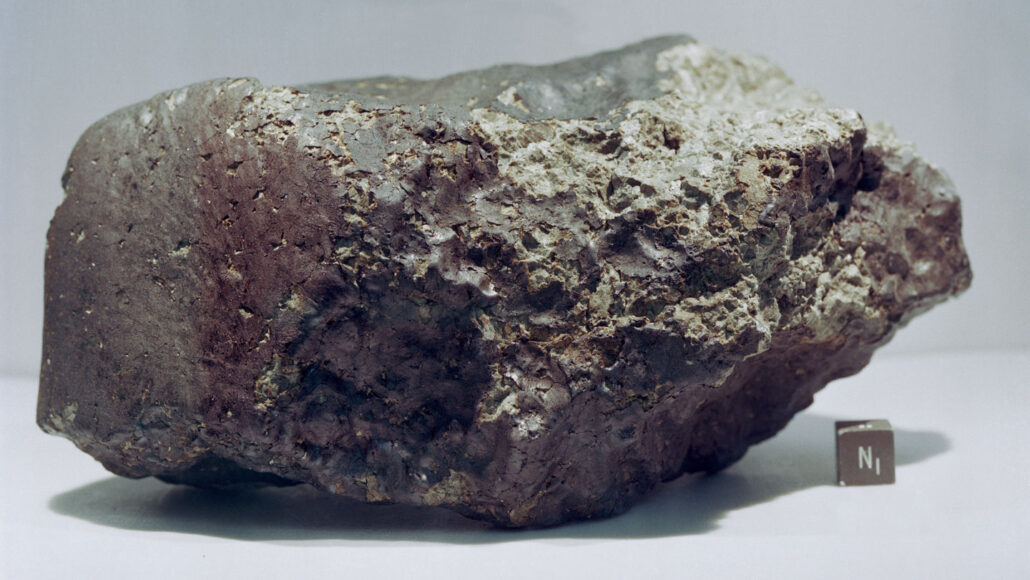No, organic molecules alone don’t point to life on Mars
They may just come from the mixing of water and minerals over billions of years

The ancient Martian meteorite ALH84001 (pictured) was discovered in Antarctica in 1984. It contains organic molecules that researchers now think were formed by geologic processes, not by alien life.
NASA
By Nikk Ogasa
A chunk of Mars that had landed in Antarctica caused quite a stir in 1996. Scientists reported that this meteorite contained organic compounds. Such carbon-based molecules are the building blocks for life. Some researchers thought these organics were evidence of life on Mars. Others were not convinced. Now, a closer look at the meteorite lends more support to those skeptics.
Some had argued that earthly life could have contaminated the rock. Others suggested some process on Mars not involving life might also have created the organics. The new study suggests this rock’s organics formed through water and minerals mingling at or under Mars’ surface.
Researchers shared that finding in the January 14 Science.
But it’s not all bad news for alien enthusiasts. The meteorite, known as ALH84001, could still aid in the search for life. How? Organic molecules produced by non-living things are thought to be necessary to spark life. “These organic chemicals could have become the primordial soup that might have helped form life on [Mars],” says Andrew Steele. Whether life ever existed there, though, remains unknown.
Steele is a biochemist. He works at the Carnegie Institution for Science. It’s in Washington, D.C. Steele was part of a team that set out to study how Martian water may have triggered a morphing of minerals in ALH84001. The team used microscopes and other tools to view tiny slivers of the meteorite. They focused on parts that appeared to have reacted with water.
These samples contained by-products of two chemical reactions. One is called serpentinization (Sur-pen-tin-ih-ZY-shun). The other is carbonation. Both can occur as fluids interact with minerals, changing them. Amid by-products of these reactions the researchers found complex organic molecules. That led the team to conclude the organics probably formed during such reactions on Mars. The same thing happens on Earth.
The types of hydrogen in ALH84001’s organic matter also offered clues to its origins. The hydrogen helped confirm that the organic compounds formed on Mars. The molecules did not emerge later from microbes on Earth. They also were not created by materials in the researchers’ lab.
It seems that at least two geologic processes on Mars made the organic matter in ALH84001, says Mukul Sharma. He’s a geochemist who did not take part in the new study. He works at Dartmouth College in Hanover, N.H.
ALH84001 is about 4 billion years old. That makes it one of the oldest Martian meteorites ever found. Other, younger bits of the Red Planet also contain complex organics. These molecules, too, are thought to have come from interactions between water and rock. So geology may have been making organic material across Mars for much of its history. “Nature has had a huge amount of time on its hands to produce this stuff,” Sharma says.
This study doesn’t prove or disprove the existence of life on Mars. But finding non-living sources of organics there is crucial for the search, Steele says. Scientists must first figure out how Martian organic chemistry works without life. After that, he says, “you can then look to see if it’s been tweaked.” Such tweaks would offer real evidence of Red Planet life.







